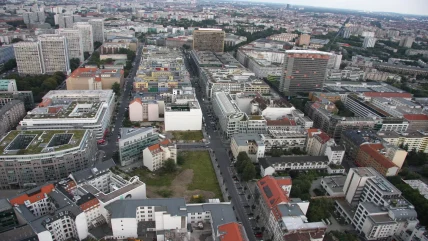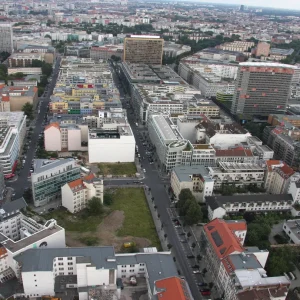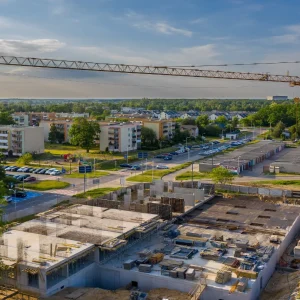
The global economic downturn, precipitated by a combination of factors including the COVID-19 pandemic, geopolitical tensions, and fluctuating commodity prices, has far-reaching implications for urban policy, planning, and transportation. As cities worldwide grapple with reduced budgets, shifting demographic patterns, and evolving transportation needs, urban planners and policymakers face unprecedented challenges. This article delves into the multifaceted impact of economic downturns on urban environments, examining the adjustments and innovations necessitated by these turbulent times.
The Financial Strain on Urban Budgets
Budget Cuts and Prioritisation
Economic downturns invariably lead to significant reductions in public sector budgets. For cities, this translates to a re-evaluation of priorities and, often, painful budget cuts. Essential services such as public transportation, housing, and infrastructure maintenance are frequently at risk. Local governments are compelled to reassess their expenditures, prioritising immediate needs over long-term projects.
For instance, the city of Birmingham in the United Kingdom faced a budget shortfall that forced it to reconsider funding allocations for various urban development projects. Investments in new infrastructure projects were delayed or scaled back, impacting the city’s long-term growth plans.
Impact on Infrastructure Projects
Infrastructure projects are particularly vulnerable during economic downturns. Large-scale developments, such as new transit lines or highway expansions, require substantial upfront investment. With limited funds, cities may halt or postpone these initiatives, affecting not only current construction jobs but also the future economic vitality of the region.
An illustrative example is the delayed expansion of the Crossrail project in London. Originally slated for completion in 2018, the project has faced numerous delays and budget overruns, exacerbated by the economic downturn. This delay has had ripple effects on local businesses and commuters reliant on improved transit options.
Transportation: Shifts in Usage and Funding
Decline in Public Transportation Ridership
Economic downturns, coupled with public health concerns such as those seen during the COVID-19 pandemic, have led to a marked decline in public transportation ridership. Fear of contagion and increased remote working have significantly reduced the number of commuters. Cities like New York and London witnessed drastic drops in subway and bus usage, leading to substantial revenue losses for transit authorities.
This decline necessitates a rethinking of funding models for public transportation. Traditionally reliant on fare revenue, many transit systems now face significant deficits. For example, Transport for London (TfL) reported a sharp decline in fare income, necessitating emergency funding from the government to maintain essential services.
Emergence of Alternative Transportation Modes
Conversely, the economic downturn has accelerated the adoption of alternative transportation modes. Bicycles, electric scooters, and walking have gained popularity as cost-effective and health-conscious alternatives to public transit. Cities are responding by investing in bike lanes and pedestrian-friendly infrastructure, even amid budget constraints.
In Paris, Mayor Anne Hidalgo has championed the development of “coronapistes” – temporary bike lanes introduced during the pandemic that are becoming permanent fixtures. This shift not only addresses immediate transportation needs but also aligns with long-term sustainability goals.
Housing and Urban Development
Affordable Housing Challenges
Economic downturns exacerbate housing affordability issues. With rising unemployment and reduced income levels, many urban residents struggle to afford housing. This situation is compounded by reduced funding for affordable housing projects as municipal budgets shrink.
Cities like San Francisco and Vancouver, already grappling with housing crises, face intensified pressure to provide affordable housing solutions. The need for innovative financing models and public-private partnerships becomes paramount in addressing these challenges.
Urban Density and Remote Work
The pandemic-induced economic downturn has also reshaped urban density dynamics. The shift to remote work has reduced the demand for office space, leading to a rethinking of urban land use. Cities are exploring the repurposing of commercial buildings for residential use, aiming to mitigate housing shortages and adapt to new work patterns.
For example, in Berlin, city planners are considering the conversion of underutilised office spaces into affordable housing units. This approach not only addresses housing needs but also revitalises areas affected by reduced commercial activity.
Environmental Considerations and Sustainability
Green Infrastructure Investment
Despite budget constraints, the economic downturn presents an opportunity for cities to invest in green infrastructure. Sustainable urban development can drive economic recovery by creating jobs and fostering long-term resilience. Projects such as green roofs, urban parks, and sustainable drainage systems are increasingly being prioritised.
Cities like Melbourne and Singapore have made strides in incorporating green infrastructure into urban planning. Melbourne’s Urban Forest Strategy aims to increase the city’s tree canopy cover, enhancing urban resilience and improving quality of life for residents.
Emphasis on Climate Resilience
The economic downturn underscores the importance of climate resilience in urban planning. Cities are increasingly vulnerable to climate-related shocks, and investing in resilient infrastructure is crucial for long-term sustainability. This includes flood defences, heat mitigation strategies, and resilient transportation networks.
Rotterdam, for example, has implemented a comprehensive climate adaptation strategy, incorporating flood-proof infrastructure and water management systems. These initiatives not only protect the city from climate impacts but also stimulate economic activity through construction and innovation.
Social Equity and Inclusion
Addressing Inequities in Urban Development
Economic downturns often exacerbate social inequities, highlighting the need for inclusive urban policies. Marginalised communities are disproportionately affected by economic hardships, necessitating targeted interventions to ensure equitable access to resources and opportunities.
Cities like Toronto are focusing on inclusive urban development, implementing policies that prioritise affordable housing, accessible transportation, and community engagement. Ensuring that all residents benefit from urban development is crucial for social cohesion and long-term prosperity.
Enhancing Community Participation
Effective urban policy and planning during economic downturns require robust community participation. Engaging residents in decision-making processes fosters trust and ensures that policies reflect the needs and aspirations of the community. Participatory budgeting, where residents have a direct say in how public funds are allocated, is gaining traction as a tool for inclusive governance.
In Porto Alegre, Brazil, participatory budgeting has been successfully implemented for decades, allowing residents to propose and vote on local investment projects. This approach not only empowers communities but also ensures that limited resources are allocated effectively.
Future Outlook: Adapting to New Realities
Leveraging Technology and Innovation
Technology and innovation play a crucial role in navigating the challenges posed by economic downturns. Smart city technologies, data analytics, and digital platforms can enhance urban planning and service delivery. For instance, real-time data on transportation usage can inform adaptive traffic management and optimise public transit routes.
Singapore’s Smart Nation initiative exemplifies the potential of leveraging technology for urban resilience. By integrating data from various sources, the city-state can respond dynamically to emerging challenges and improve the quality of urban life.
Collaborative Approaches and Partnerships
Collaboration between governments, the private sector, and civil society is essential for addressing the complex challenges of economic downturns. Public-private partnerships can unlock new funding sources and drive innovation in urban development. Additionally, regional cooperation can enhance resilience by addressing issues that transcend municipal boundaries.
The European Union’s Cohesion Policy promotes regional development and cooperation, facilitating investments in infrastructure, innovation, and social inclusion. Such collaborative approaches are vital for fostering sustainable urban growth in the face of economic uncertainties.
Conclusion
The economic downturn presents significant challenges for urban policy, planning, and transportation. However, it also offers an opportunity for cities to innovate, prioritise sustainability, and promote social equity. By rethinking traditional approaches and embracing new paradigms, urban planners and policymakers can navigate these turbulent times and build resilient, inclusive, and vibrant urban environments for the future. The key lies in adaptive planning, robust community engagement, and leveraging technology to create cities that are not only economically viable but also sustainable and equitable for all residents.






